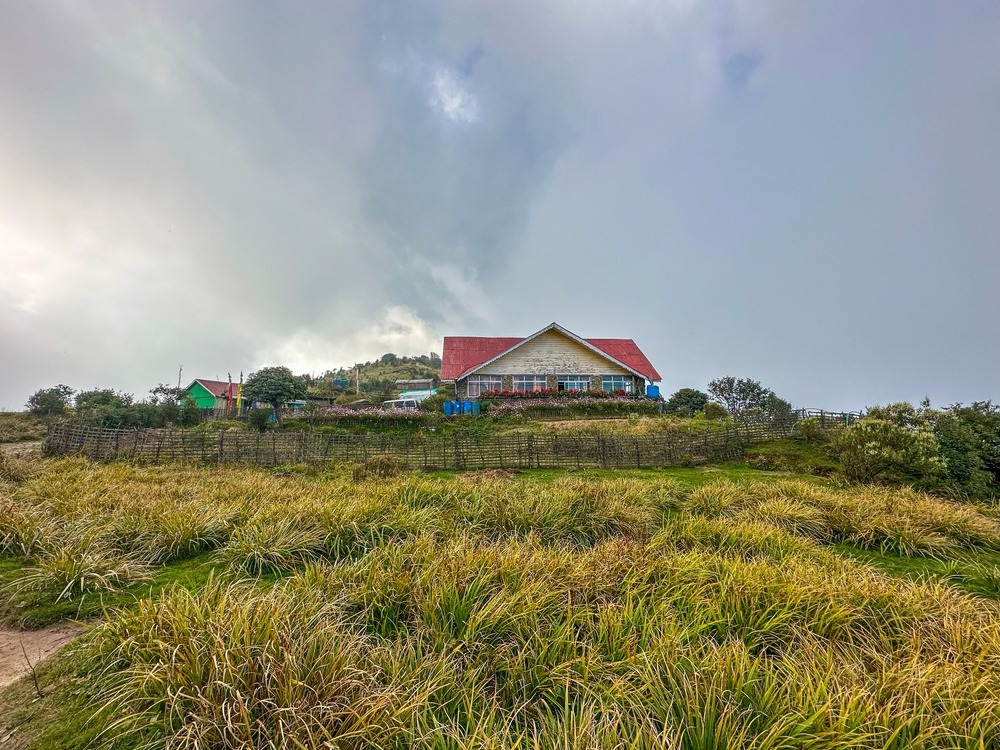If you’re planning the Sandakphu trek, timing is everything. I’ve been through the seasons here, and trust me—when you go makes all the difference between just another trek and a once-in-a-lifetime memory. Let me break it down simply so you don’t waste your time guessing.
Winter Wonderland: December to February (For Snow Lovers)
If snow is what you’re after, this is your window. With its snow-covered paths, frozen trees, and that otherworldly quiet that only the mountains can provide, Sandakphu in the dead of winter is like entering a snow globe. The temperatures, though, can dip to –5°C or even lower, so you’ll need proper gear.
What I loved most about trekking in this season was waking up to whitewashed ridges and catching the Kanchenjunga range glowing in golden light. The downside? Some routes may get blocked due to heavy snow, and teahouses can feel a little too cold for comfort. But if you want untouched beauty and snow crunching under your boots, nothing beats this season.
Spring Bloom: March to May (For Flowers and Clear Views)
This is when Sandakphu transforms into a colorful paradise. The entire trail feels alive as magnolias blossom and rhododendrons tint the slopes pink and scarlet. I personally think this is the easiest season to balance good weather, manageable cold, and stunning views.
The Kanchenjunga massif (also called the Sleeping Buddha) looks crystal clear in these months. And if you’re lucky, you’ll catch Everest, Lhotse, and Makalu all in one stretch of the horizon. Days are warmer, nights are cool but not freezing, and walking feels more comfortable compared to winter.
Autumn Glory: October to November (For Crisp Skies)
If you don’t want snow but still want the sharpest mountain views, autumn is your season. Post-monsoon skies are incredibly clear—no haze, no clouds, just the giant peaks staring right at you. I did my second trek here in October, and the sight of Everest lined up alongside Kanchenjunga is still etched in my memory.
The weather is dry, the trails are clean, and this is also when photography feels most rewarding. Nights can be cold but not unbearable. It’s also a good time if you want to avoid the mud and leeches of the monsoon months.
Which Season Should You Pick?
- Snow Seekers: December to February
- Flower & Pleasant Weather Lovers: March to May
- Crystal-Clear Views: October to November
If I had to pick one, I’d say spring is the best balance. You get flowers, good weather, and great views without the biting cold.
My Guided Trek Experience
Now, a lot of people ask me whether it’s better to do Sandakphu solo or with a trekking company. Honestly, if it’s your first high-altitude sandakphu phalut trek, going with an experienced team makes life so much easier. I went with The Searching Souls, and what I liked was how they handled everything—permits, stay arrangements, local guides, and even little things like hot water bottles at night.
It never felt like a commercial trip, more like trekking with friends who knew the mountains inside out. They also follow eco-friendly practices, which I appreciated. You can, of course, plan it solo, but for me, having a reliable team made the experience smoother and safer.
Final Thoughts
The best time to go to Sandakphu really depends on what you’re looking for—snow, flowers, or clear skies. Each season has its charm, but no matter when you go, the sight of Kanchenjunga and Everest together will stay with you forever. Just plan wisely, pack right, and choose a safe trekking approach.



